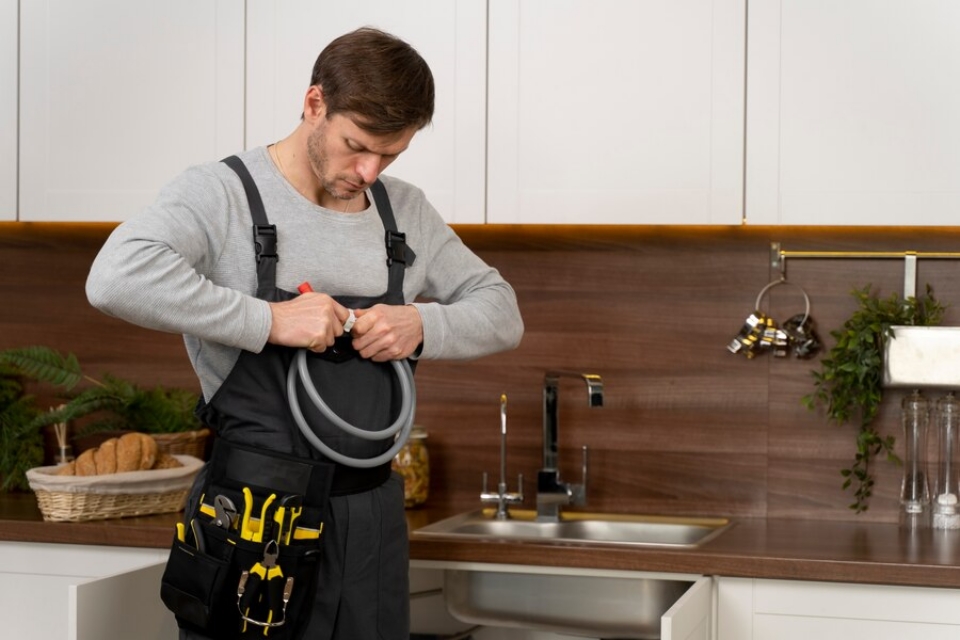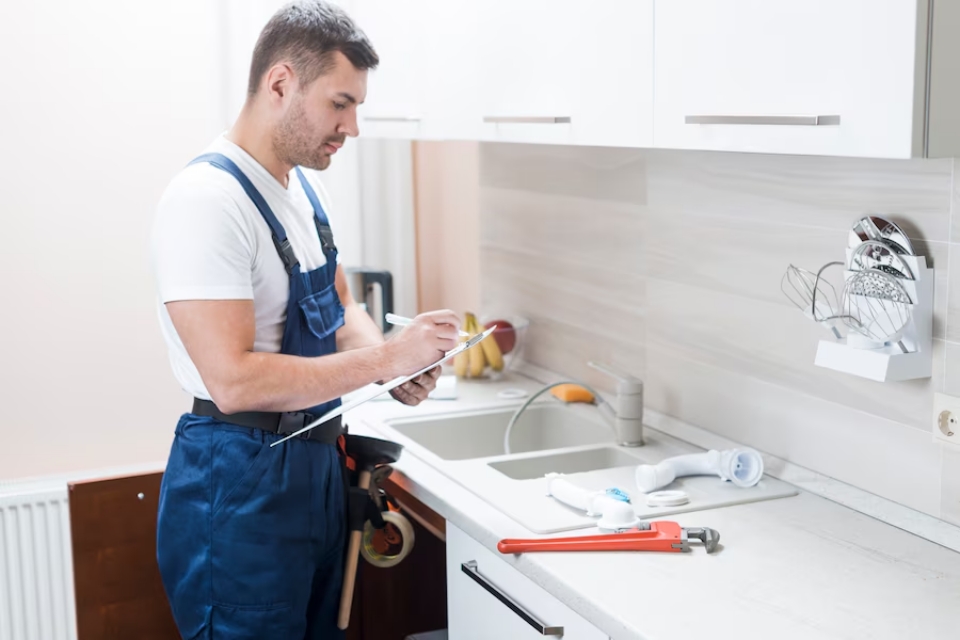Replacing a kitchen sink or basin can seem like a daunting task, especially if you’re concerned about whether it’s possible to do so without replacing the entire countertop. This article By Top A Mag Team will provide a comprehensive guide on how to replace a kitchen sink while preserving your existing countertop. We’ll cover the steps involved, the tools you’ll need, and some tips to ensure a smooth process. Let’s dive into the details.
Key Takeaways
- Replacing a kitchen sink without replacing the countertop is possible with the right tools and preparation.
- Accurate measurements of the current sink and cutout are essential for a proper fit.
- Gather all necessary tools and materials before starting to ensure a smooth process.
- Carefully follow the steps to disconnect the plumbing, remove the old basin, and install the new one.
- Test for leaks after installation and make adjustments as needed to ensure a secure and watertight seal.
Understanding the Basics for Sink Replacement
Replacing a kitchen sink or basin without touching the countertop is entirely possible, provided the basin and countertop are in good condition and the new basin fits the existing cutout. It’s essential to measure the current sink and the cutout precisely to ensure a proper fit. This project typically involves disconnecting plumbing, removing the old one, and installing the new one.
Tools and Materials Needed for Sink Replacement
Before starting, gather the following necessary tools and materials required for this task:
- Adjustable wrench
- Pipe wrench
- Screwdriver
- Plumber’s putty
- Silicone sealant
- Bucket
- Towels
- New sink
- New faucet (if needed)
Having everything ready will make the process smoother and reduce downtime in your kitchen.
Step-by-Step Guide
1. Turn Off the Water Supply
The first and maximum crucial step is to turn off the water delivery. Locate the shut-off valves under the basin and flip them off. If there are no shut-off valves, you might need to turn off the main water supply to your home.
2. Disconnect the Plumbing
Place a bucket under the sink to catch any water remaining in the pipes. Use an adjustable wrench to disconnect the water supply lines from the faucet. Next, disconnect the drain pipe using a pipe wrench. Be prepared for some water to spill out.
3. Remove the Old Sink
Check if the sink is held in an area with clips or adhesive. If clips are used, loosen them with a screwdriver. Carefully cut through any caulk or adhesive sealing your basin to the countertop using a utility knife. Gently lift it out of the cutout.
4. Prepare the New Sink
Inspect the new sink and ensure it fits the existing cutout. If necessary, make adjustments to the cutout, but be cautious not to damage the countertop. Apply a bead of plumber’s putty around the edge of the new basin’s drain openings.

5. Install the New Sink
Lower the new sink into the cutout, ensuring it sits flush with the countertop. If your basin requires clips, secure them according to the manufacturer’s instructions. Apply a bead of silicone sealant around the edge of the basin where it meets the countertop to create a watertight seal.
Connecting the Plumbing
Once the new sink is in place, reconnect the plumbing. Attach the water supply lines to the faucet and tighten them with an adjustable wrench. Reconnect the drain pipe, ensuring all connections are secure to prevent leaks.
Testing for Leaks (Most Important)
Turn on the water supply and run both hot and cold water to check for leaks. Inspect all connections under the sink to ensure there are no drips. If you note any leaks, tighten the connections as important.
Tips for a Successful Sink Replacement
- Measure Twice: Accurate measurements are crucial to ensure the new sink fits the existing cutout.
- Use Quality Materials: Invest in good quality sealants and putty to ensure a lasting installation.
- Check Compatibility: Ensure the new sink and faucet are compatible with your existing plumbing.
- Follow Manufacturer Instructions: Always follow the manufacturer’s instructions for both the sink and any mounting hardware.
Common Challenges and Solutions

Dealing with Tight Spaces
Working under a basin or sink can be challenging due to limited space. Using tools with longer handles or extensions can help. If space is extremely tight, consider removing adjacent cabinet doors for better access.
Handling Old Plumbing
Older plumbing can be brittle and prone to breaking. Handle all connections with care and consider replacing old pipes if they are in poor condition.
Ensuring a Good Seal
Creating a watertight seal between the basin and countertop is vital. Use a generous amount of silicone sealant and smooth it out evenly to prevent water from seeping under the basin.
Frequently Asked Questions (FAQs)
1. Can I replace any type of Basin without replacing the countertop?
Most sinks or basins can be replaced without replacing the countertop as long as the new basin fits the existing cutout. However, some basins, like farmhouse or apron-front basins, may require additional modifications to the countertop or cabinetry.
2. Do I need a professional plumber to replace my kitchen sink?
While many homeowners can replace a kitchen sink themselves, hiring a professional plumber ensures the job is done correctly and can help avoid potential issues, especially if you’re unfamiliar with plumbing work.
3. What if the new Basin is slightly larger than the old one?
If the new basin is slightly larger, you may need to enlarge the cutout in the countertop. This requires precision and the right tools to avoid damaging the countertop. If you’re unsure, consider hiring a professional.
4. How long does it typically take to replace a kitchen sink?
Replacing a kitchen sink can take anywhere from a few hours to a full day, depending on your experience, the complexity of the plumbing, and the condition of the existing setup.
5. Can I reuse my old faucet with the new sink?
Yes, you can reuse your old faucet as long as it is still in good condition and compatible with the new sink or basin. Make sure the mounting holes in the new basin match the configuration of your old faucet.
Conclusion
Replacing a kitchen basin without replacing the countertop is a feasible project with the right tools and preparation. By following the steps outlined in this guide, you can successfully install a new basin, enhance the functionality of your kitchen, and preserve your existing countertop.
Remember to measure carefully, use quality materials, and test for leaks to ensure a successful installation. With patience and attention to detail, you can achieve a professional-looking result and enjoy your new kitchen sink for years to come.

